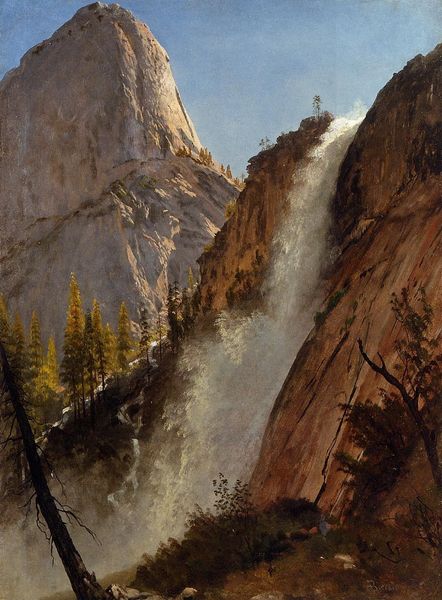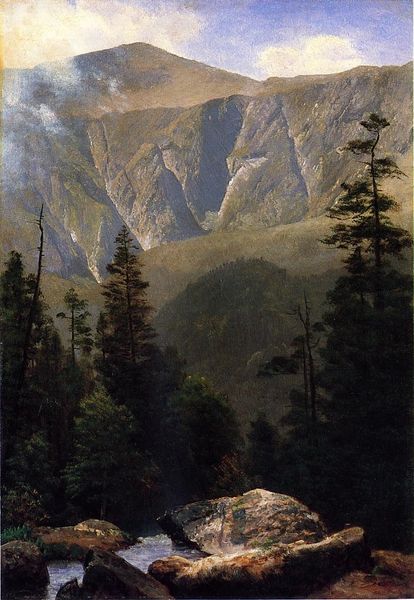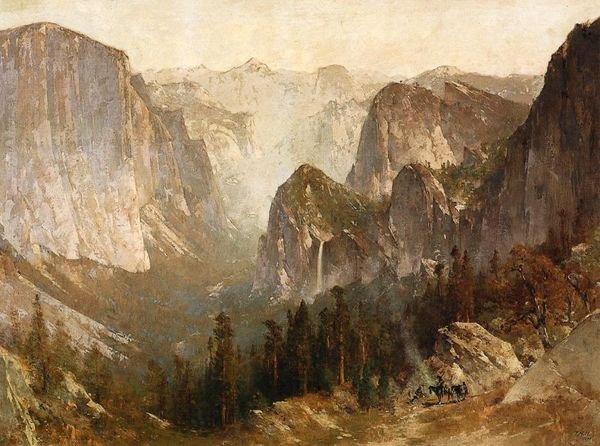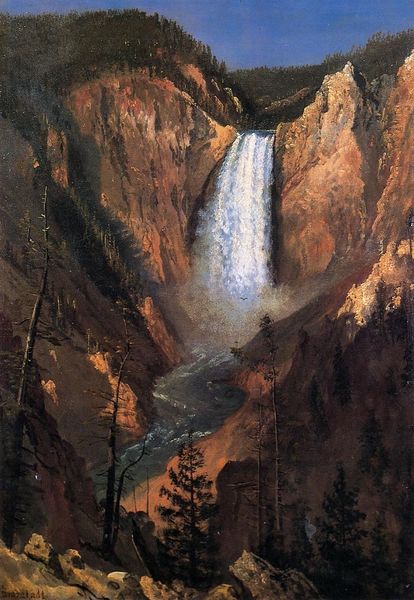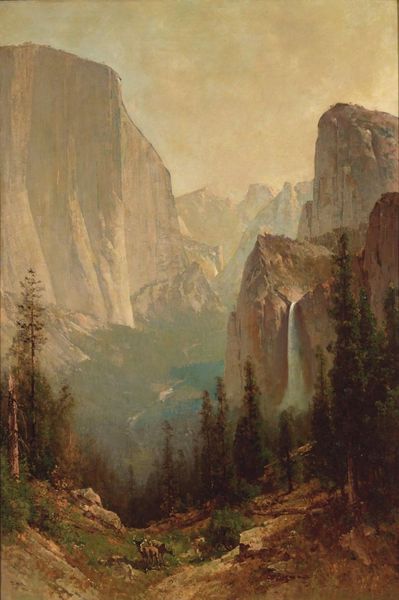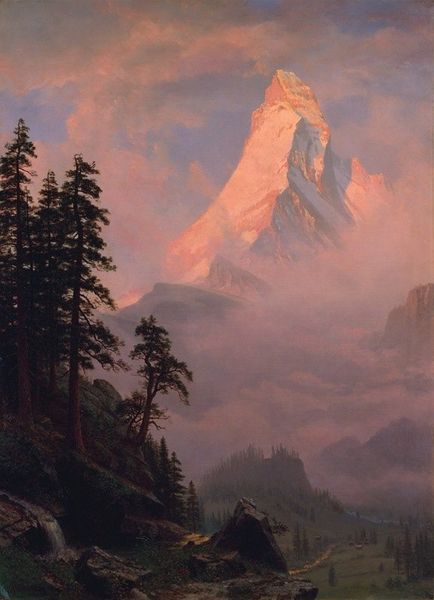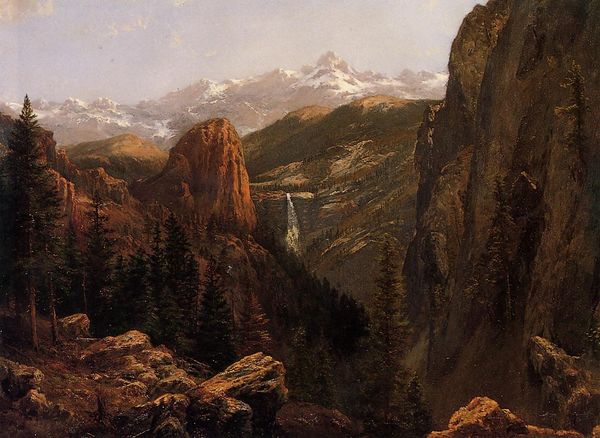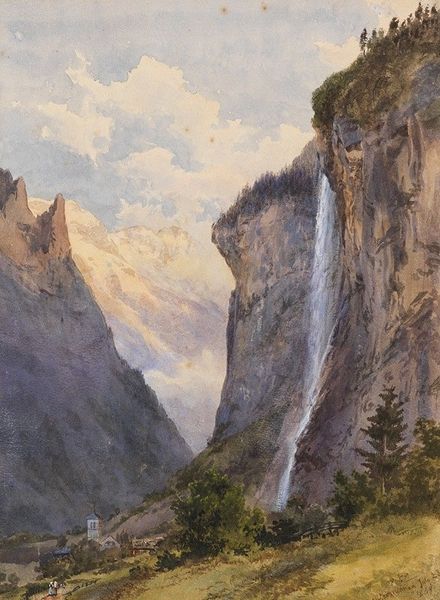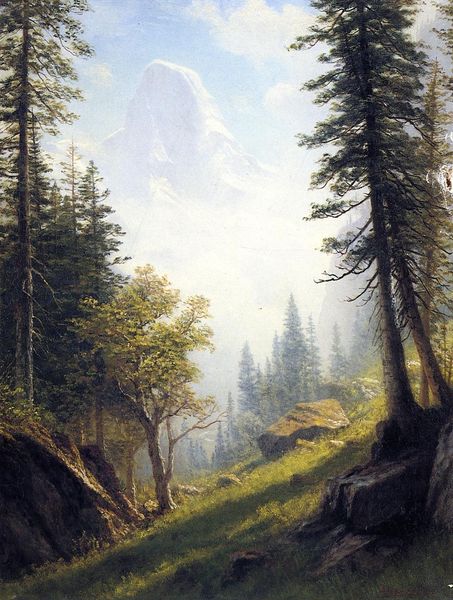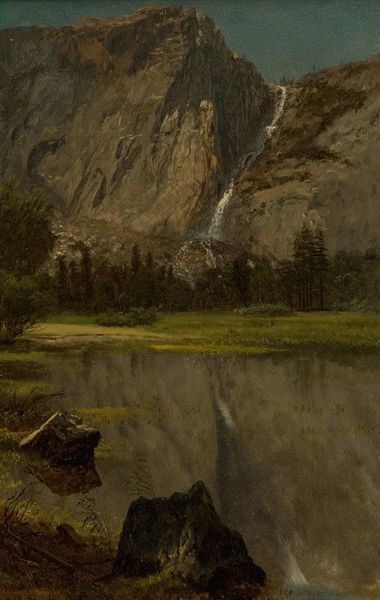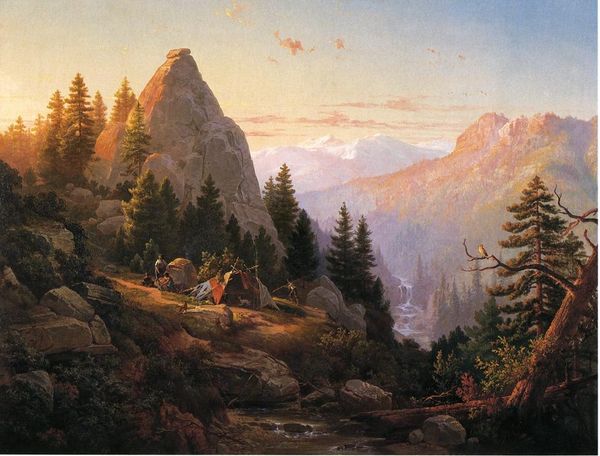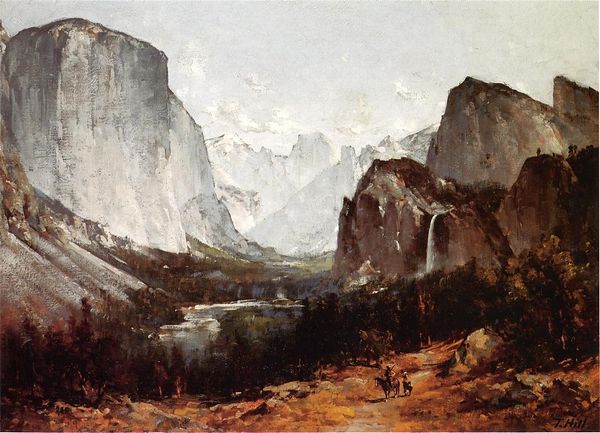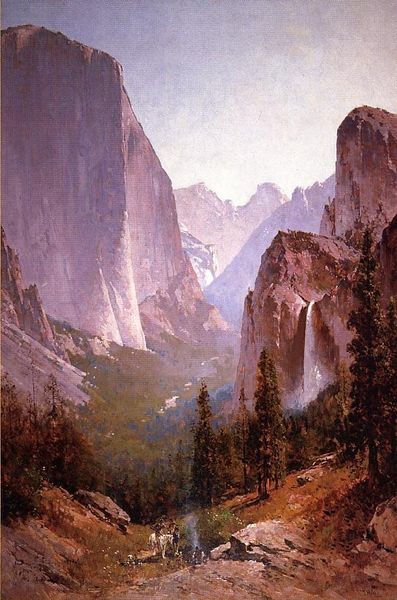
Dimensions: 48.26 x 34.92 cm
Copyright: Public domain
Curator: Immediately I’m struck by how stark and imposing this scene feels, and yet strangely muted in tone. What are we looking at here? Editor: This is Albert Bierstadt’s "Cathedral Rocks, A Yosemite View," painted in 1872. A classic of the Hudson River School style rendered in oil paint, it depicts one of Yosemite’s iconic rock formations. Curator: "Cathedral Rocks" is an apt title, they rise like Gothic spires. And notice the dramatic light falling on the peaks—almost like a divine spotlight. How does this fit into what was happening historically? Editor: In the late 19th century, paintings of the American West, particularly by artists like Bierstadt, played a huge role in shaping perceptions of the landscape. Manifest Destiny, national parks, railroads--the imagery fed into ideas of expansion and preservation that were hotly debated. Curator: Absolutely. And the composition speaks volumes. The relatively small trees and the open foreground emphasize the vast scale of nature— dwarfing the human presence. It resonates deeply with the Romantic notion of the sublime, right? Editor: Yes, there is an element of that. I’d argue that it’s also important to see it in the context of how landscape painting was commissioned, sold, and exhibited. The creation of grand national narratives helped establish the status of art and institutions themselves. Curator: That is fair, considering its impact on national identity at the time. What stands out most for me now is this timeless visual language that continues to invoke awe for the American wilderness, even when knowing that his panoramas often took certain representational liberties. Editor: Precisely. The romanticizing is now inextricable from a history of westward expansion. But in appreciating its cultural echoes and socio-political impact, we also see the continuity of symbols which have resonated through our art history.
Comments
No comments
Be the first to comment and join the conversation on the ultimate creative platform.
